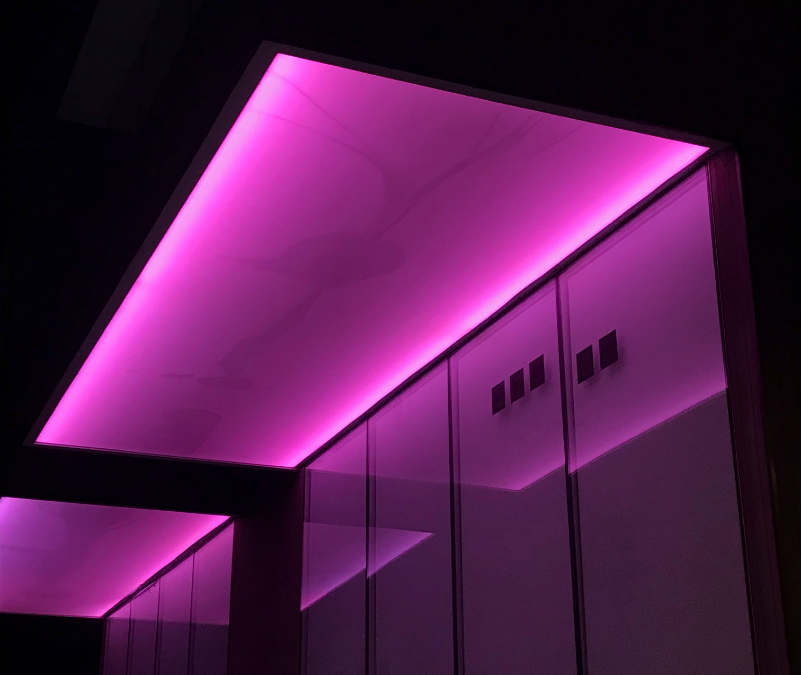Backlighting, a technique where a light source is placed behind a subject or object, is a powerful tool in interior design. It not only enhances the visual appeal of a space but also plays a significant role in improving functionality. By casting light from behind objects or surfaces, backlighting creates a sense of depth, drama, and warmth that can transform an interior environment. This article explores how backlighting can be used effectively in interior design to elevate both ambiance and functionality.
Creating Mood and Atmosphere
One of the primary benefits of backlighting is its ability to set the mood and atmosphere of a room. By positioning light sources behind translucent materials or objects, designers can create soft, diffused lighting that adds warmth and sophistication to the space. This effect is often used in areas such as:
- Living Rooms: Backlit features, such as illuminated wall panels or behind furniture, can create a cozy and inviting atmosphere.
- Bedrooms: Backlighting behind headboards or under bed frames can produce a serene, restful ambiance.
Highlighting Architectural Features
Backlighting is an effective way to accentuate architectural elements within a space. By illuminating features from behind, designers can draw attention to unique shapes, textures, and materials. Common applications include:
- Cove Lighting: Installed in recesses or coves along ceilings or walls, cove lighting creates a subtle, indirect light that highlights the contours of the room.
- Backlit Panels: Panels made of materials like glass or acrylic, placed behind architectural details, can enhance their visibility and create striking visual interest.
Enhancing Functional Areas
In addition to its aesthetic benefits, backlighting can significantly improve the functionality of various spaces. Properly designed backlighting ensures that essential areas are well-lit and easy to use. Examples include:
- Kitchen Countertops: Backlighting under cabinets or behind countertops can illuminate work surfaces, making food preparation safer and more efficient.
- Vanities and Mirrors: Backlighting behind mirrors or around vanity areas provides even, shadow-free lighting, ideal for grooming and makeup application.
Accentuating Artwork and Decorative Elements
Backlighting can serve as an excellent way to highlight artwork, sculptures, and other decorative elements within a room. By placing light behind or around these items, designers can enhance their visibility and create a gallery-like effect. This technique is particularly effective for:
- Art Niches: Integrating backlighting into art niches or display shelves can draw attention to artwork and create a focal point.
- Sculptures and Objects: Placing light behind sculptures or decorative objects adds depth and dimension, making them stand out as focal points in the room.
Improving Spatial Perception
Backlighting can be used to manipulate spatial perception and create a sense of openness or depth in a room. For instance:
- Illuminated Walls: Backlighting behind wall panels or partitions can create an illusion of more space and add an element of depth to flat surfaces.
- Staircase Lighting: Backlighting on staircases or steps can make them more visible while adding a dramatic effect that enhances the spatial experience.
Providing Subtle Illumination
Backlighting is ideal for providing subtle, ambient illumination that complements primary lighting sources. This gentle light can reduce glare and create a more comfortable visual environment. Examples include:
- Backlit Shelving: Shelves with built-in backlighting can softly illuminate items while minimizing harsh shadows.
- Backlit Wall Art: Adding backlighting behind wall art or decorative panels creates a gentle glow that enhances the artwork without overwhelming the space.
Enhancing Safety and Navigation
Backlighting can also improve safety and navigation within a home. By illuminating pathways, steps, and transitions, backlighting helps prevent accidents and ensures safe movement through the space. Practical applications include:
- Backlit Pathways: Installing backlighting along pathways or walkways provides clear visibility and guides movement, especially in dark or dimly lit areas.
- Step Lighting: Backlighting on steps or stair treads makes them more visible, reducing the risk of trips and falls.
Customizing Lighting Effects
With advances in lighting technology, backlighting can be customized to achieve a wide range of effects. Designers can adjust color temperatures, and brightness levels, and even incorporate programmable features to create dynamic lighting scenarios. Examples include:
- Color-Changing Backlighting: LED systems with color-changing capabilities can adapt the lighting to match different moods or occasions.
- Dimmer Controls: Adjustable backlighting allows for fine-tuning of light intensity, providing flexibility for various activities and settings.
Backlighting is a versatile and impactful technique in interior design that enhances both ambiance and functionality. By strategically placing light sources behind objects or surfaces, designers can create mood, highlight architectural features, improve functionality, and add visual interest to a space. Whether used for subtle ambient illumination or dramatic focal points, backlighting offers endless possibilities for transforming interiors and creating a visually compelling and functional environment. As lighting technology continues to evolve, the potential applications and benefits of backlighting will only expand, providing new opportunities for creative and effective interior design.
Future Designs can help you find the right lighting for your space. Contact us.

